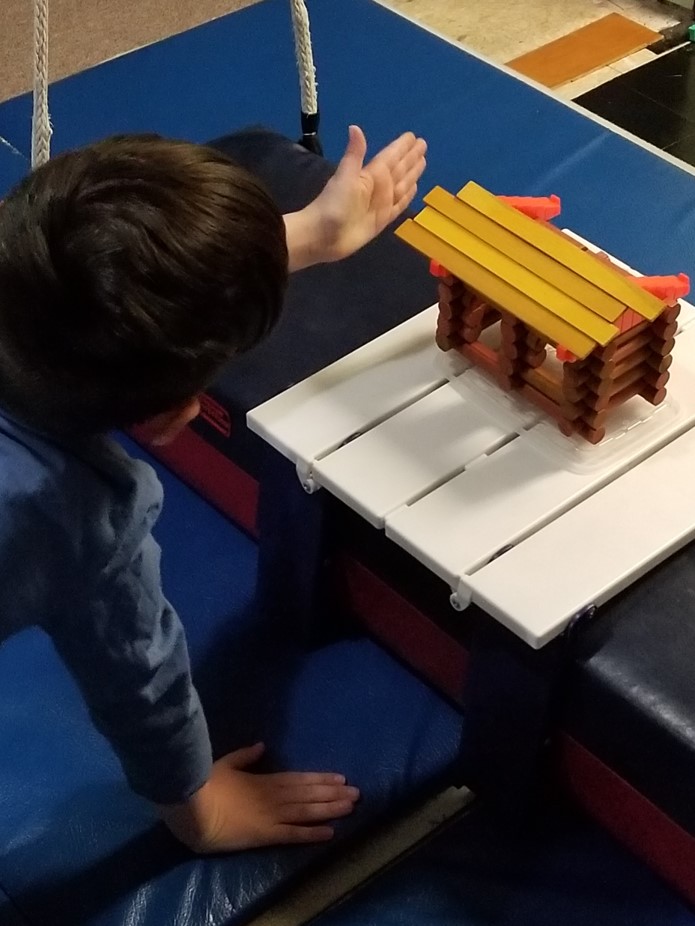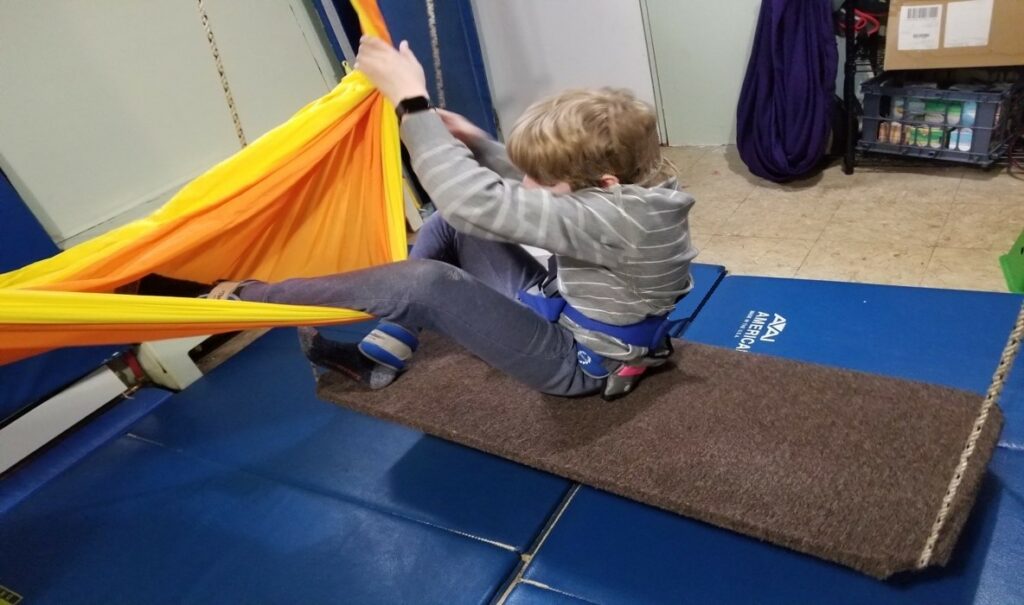Features that reinforce success!
Motor Planning is a term used to describe the ability to plan and carry out a skilled motor act in the correct sequence from beginning to end. Motor planning is a feature of coordination that allows for mid-course corrections during a motor act. Body awareness, muscle strength, and functional vision are three elements of motor planning that are usually integrated during activities that require organization. When children have difficulty with any one of these three key elements, errors of coordination occur.

Body awareness is one of the key components of motor planning. The term Body Awareness may be defined as an understanding of body parts and their capacity for movement. This includes planning for the management of force and direction of movement. For example, the youngster shown in the photo above has used the hop horse to hop over to the set up. He is leaning over to pick up a plastic coin and put the coin into the slot on the piggy bank. The sensory input of hopping on the horse has increased his awareness of the muscles involved and the direction they are moving in. Additionally, the youngster will have gained an awareness of the location and moves parts of his body must go through in order to complete the task without falling over. In this way, body awareness is shown to have a direct impact on motor planning and coordination
Muscle strength is a term commonly used when referring to the amount of power a group of muscles put forth. However, in terms of motor planning, the main idea is being able to recruit just the right amount of power needed for coordination of the activity. Many youngsters have difficulty being able to grade or modify the amount of power needed from muscle groups and end up breaking or crushing objects. In terms of motor planning, the main idea is being able to look at an item, figure out how much power would be needed to move it, and then come up with a plan to use only the amount of muscle strength needed to move the object.
One feature of muscle strength that adds precision to patterns of coordination is the ability to select and use only the body parts needed to accomplish the task. That is to say, the ability to move simply selected body parts with no overflow of movement to other parts of the body.


The youngster in the photo above is combining body awareness with muscle strength as he moves from one swing to another. Use of dynamic suspended equipment in a sensory gym is one way of incorporating both strength and body awareness for motor planning during activities that require precision in movement. The use of moving equipment requires ongoing attention to keeping the body centered in order to avoid a fall. Meanwhile, setting up objects so that the body will have to pull or push its own weight in order to travel from one point to another is a way of being certain that sufficient muscle strength is being planned for.
Functional Vision is another key component of motor planning. The term Functional Vision is a broad term that covers many types of visual perception. The main idea of functional vision in terms of motor planning is the use of visual information to perform activities that require coordination. In this way, sensory input from movements of eye muscles work together while the brain interprets the visual input required for the activity. Functional vision comes into play for activities such as: ● reading and writing ● playing sports ● recognizing objects needed for puzzle assembly ● watching hand movements in order to manipulate small objects during fine motor skills.

Types of functional visual skills often used in motor planning include:
- Visual Motor Integration – the ability to coordinate motor moves with vision, such as needed to use a bat to hit a baseball
- Visual Discrimination – the ability to identify differences of items based upon how they look, such as color, size or shape such as needed to complete a puzzle
- Visual Association – the ability to group or categorize objects based upon how they relate to each other. For example, grouping a deck of playing cards into suits such as diamonds, spades, clubs, and hearts.
- Visual Tracking – the ability to use both eyes to visually pursue a moving target, such as when watching the moves of each shoelace when lacing up sneakers
Read more about motor planning skills involved with coordination in the posts on visual sequencing and tracking skills and upper body strenth. You can also find helpful information in this article from Kid Sense.


Comments are closed.